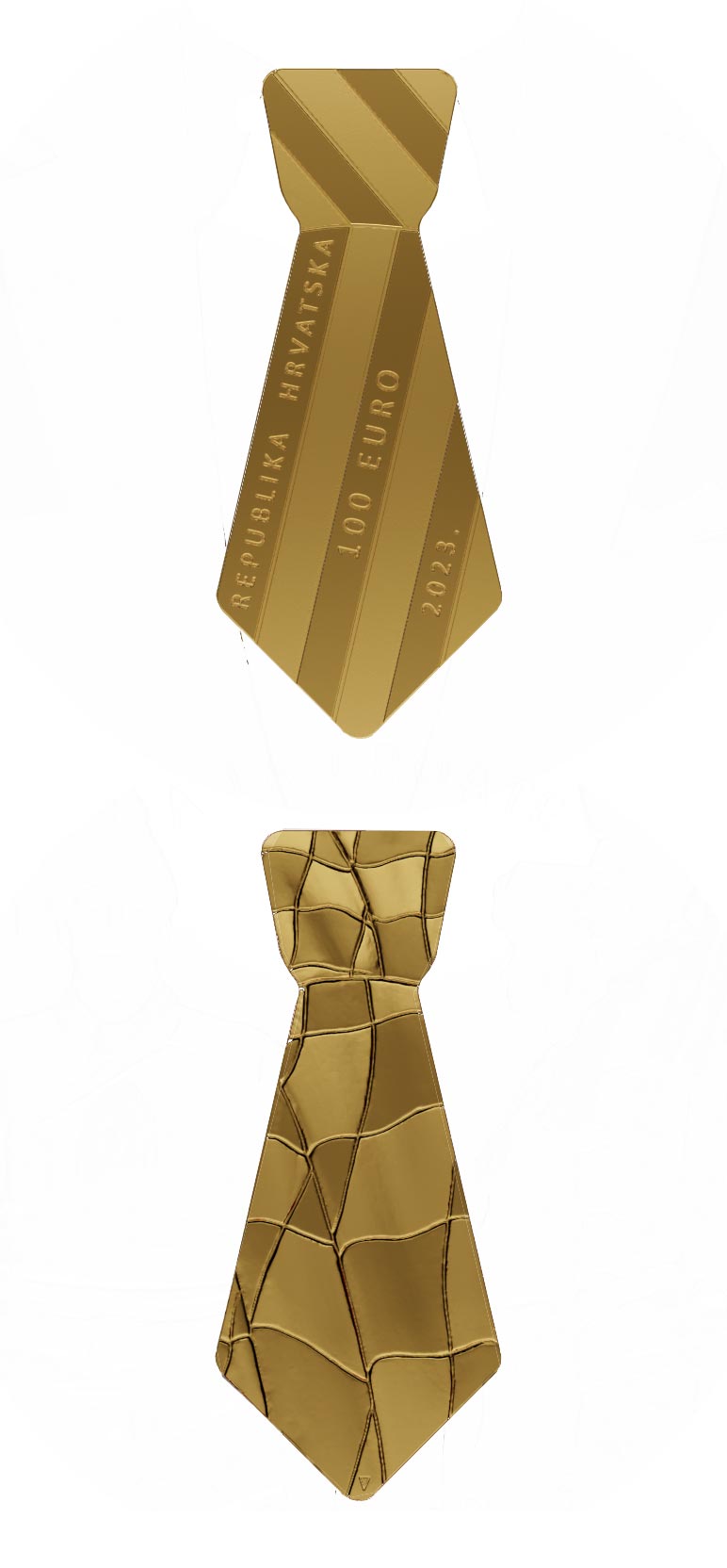100 euro – Contour Necktie

The Croatian National Bank in cooperation with the Croatian Mint issued the first Croatian collector euro coin with the basic motif of a contour necktie, a recognisable and renowned cultural motif in the popular history of the Republic of Croatia.
The gold and silver collector coin “Contour Necktie” is available in a limited series of 500 pieces.
The issue of “Contour Necktie” consists of two coins of different shapes, made of different precious metals, gold and silver. The gold collector coin is issued in the 100 euro denomination and weighs one ounce (31.103 grams), while the silver collector coin is issued in the 6 euro denomination and weighs two ounces of silver (62.207 grams). The gold collector coin follows the contours of the necktie and is inserted into the silver collector coin whose opening harmoniously follows the given shape, so that in combination they form a complete forging.
Croatian artist and sculptor Nikola Vudrag has translated a part of the culture, not only of Croatia, but also of the world, into the gold and silver collector coin “Contour Necktie” edition. The reverse of the coin shows Croatian soldiers who fought under the French flag in the Thirty Years’ War in the 17th century. Around the neck they wore a scarf, better known today as a cravat, which immediately attracted the attention of the French, and the fact that even the young French king Louis XIV started wearing the cravat speaks volumes about its acceptance. After him, all the French quickly embraced it and wore it “à la croate”, i.e. in the Croatian way, and this very inscription adorns the numismatic coin “Contour Necktie”, as a kind of homage to this iconic fashion and cultural item.
The theme of the necktie is also extends to the packaging in which gold and silver collector coin “Contour Necktie” is conveniently stored, The packaging with the necktie motif is signed by Design Bureau Izvorka Jurić, who played with this strong symbolism and gave it a contemporary interpretation. The boxes are handmade, and this is what hides their uniqueness; each copy is imperfect in its own way.
